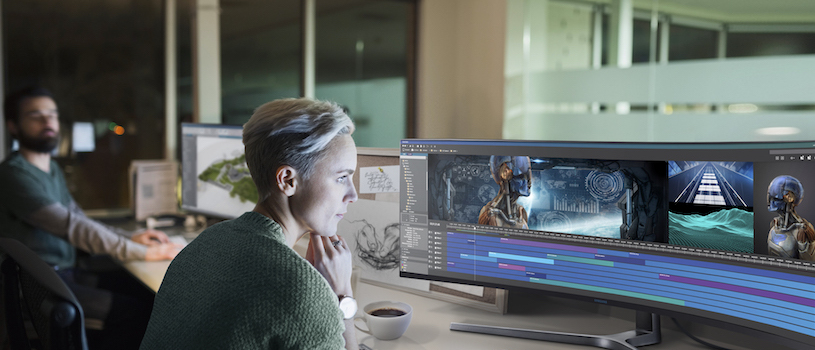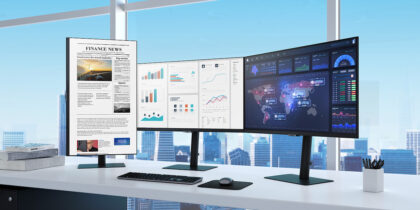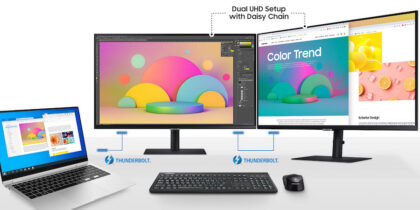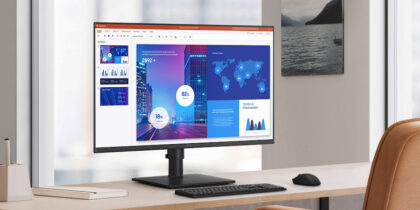For creatives, such as graphic designers, the right monitor really matters when it comes to quality, output and efficiency. Samsung has a range of new monitors, including a 49-inch ultra-wide QLED monitor, that’s a multitasker’s dream, coming on the market. We sat down with Ramseen Evazians of Samsung to talk about the company’s latest offerings and why they’re perfect for design and creative applications.
1. What are the benefits of having a super-wide 49-in. monitor?
The beauty is in the massive, wide canvas that helps designers be extra efficient. They can genuinely multi-task off of just one monitor, instead of two or even three. Imagine you’re video editing, and you’re actually able to see the before and after video on the same screen. Same thing with photo editing. Same thing again with publishing applications and even multiple spreadsheets. A visual canvas that wide means no bottom scroll bar. The display is also gently curved, so the workspace becomes immersive.
Media is changing, particularly on the digital side. Video used to have really fixed dimensions, but now we’re seeing requirements to produce digital content in a wide variety of shapes. Building creative for something like the digital sideline boards at a soccer stadium would be really difficult on a regular monitor. On a super-wide, it’s not only easier to build but also can make it easier for clients to proof on-screen.
2. QLED is relatively new technology for desktop monitors. What should designers know about it?
QLED is a technical term for the layer of film added to the “sandwich” of films that make up an LCD display monitor. It uses quantum dots and high dynamic range (HDR) technology to optimize the visuals. That means darker blacks and brighter neons, making the color really pop. Q is for quantum dots, and that layer filters and hyper-controls the LCD’s backlighting on a pixel-by-pixel basis.
Multiple Monitors in a Mobile World
See how the mobile workforce can gain productivity and health benefits from multiple displays. Download Now
3. You also have new ultra high definition monitors coming on the market. What are the benefits?
Historically, if a designer wants and needs to work on a super high-resolution monitor, that display might cost $1,200. We’re introducing a 32-in. ultra-high-definition monitor that’s going to give users about three times the performance level of that monitor, in terms of color volume, depth and detail, at about half the price.
4. Why is the newly included USB Type-C port important for designers?
These monitors support USB Type-C. This means, in practical terms, that designers can come to work, connect one cable from their laptop and get full HD resolution on the screen with this new connectivity standard. At the same time, that display is also charging the laptop, so you don’t even need to bring and plug in a power adapter. A keyboard, mouse, webcam, external hard drive, printer or other peripherals, can all be connected to the back of the display. So that tangle of wires and all the adjusting is no longer an issue.
With the way media is evolving and expanding, these kinds of displays will end up being standard tools in a lot of creative studios, offering more visibility and connectivity than ever before.
Learn more about advancements in high-resolution monitor technology for creative applications by checking out our full line of monitors and displays.








